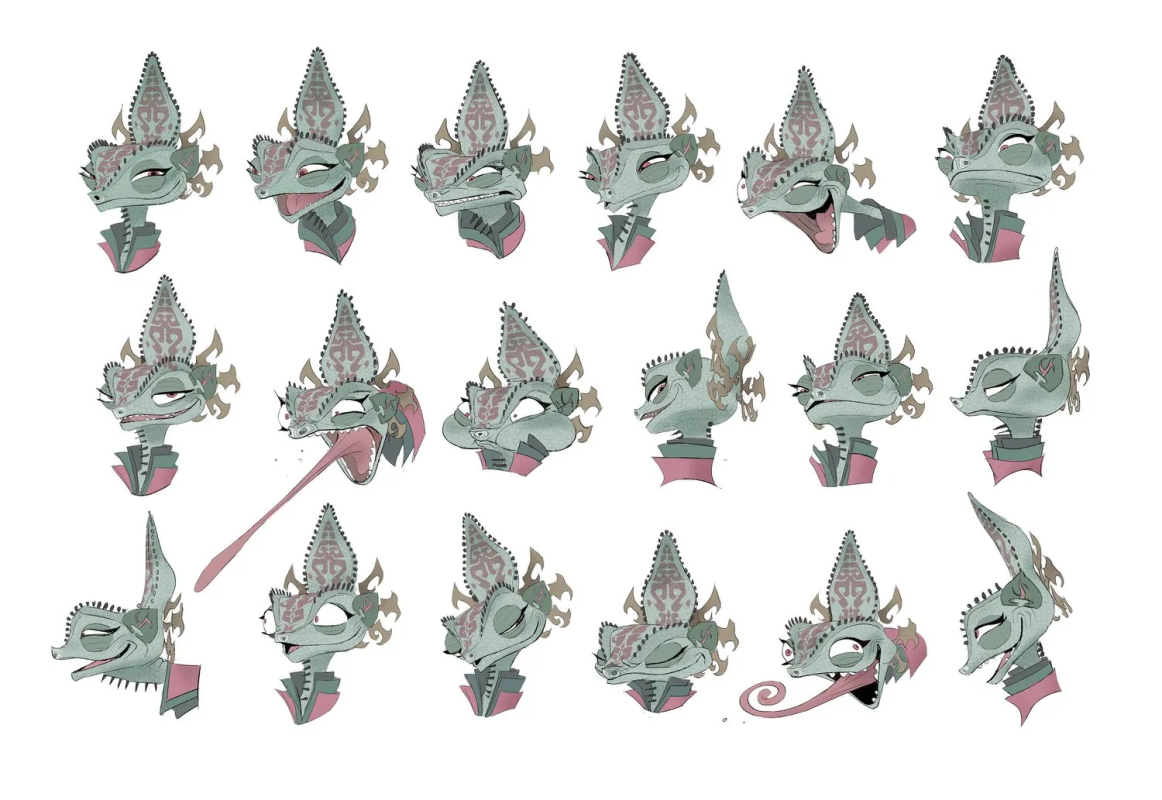Disney
Kung Fu Panda 4’s’ Chameleon: Dreamworks’ Highly Detailed Creation, Every Aspect Animated
In “Kung Fu Panda 4,” director Mike Mitchell demonstrates a penchant for villains that serve as foils to the hero, a narrative strategy that he amplifies with the character of the Chameleon, portrayed by the esteemed Viola Davis. Within this latest installment of the DreamWorks Animation franchise, the iconic panda Po, voiced by Jack Black, finds himself confronting this formidable adversary as he grapples with the responsibility of identifying a successor while transitioning to a new role in the tranquil Valley of Peace. Mitchell’s thematic exploration delves into the shared experience of being underestimated, a motif that resonates deeply with both Po and the Chameleon.
Viola Davis infuses the Chameleon with a commanding presence tinged with an air of elegance, a portrayal that draws inspiration from the character’s design, particularly her attire reminiscent of Taotie. Head of character animation, Sean Sexton, elaborates on the technical intricacies involved in bringing the Chameleon to life. With an astounding 8,130 individual controls, the animation team meticulously crafted every aspect of the Chameleon’s appearance and movements, from the subtle nuances of her expression to the intricate details of her robe and the spikes on her head. Sexton underscores the immense challenge posed by animating such a complex character, noting that every element, down to the smallest detail, was meticulously designed and animated to achieve the desired effect.

Moreover, the narrative complexity of the Chameleon extends beyond her physical appearance to her role within the story. Throughout the film, she assumes various guises, morphing into more than ten distinct characters, each with their own unique traits and mannerisms. Animation tests were crucial in determining how the Chameleon would move and interact with her surroundings, especially during her transformative sequences. Sexton explains the painstaking process of synchronizing the character rigs of the Chameleon and her various alter egos, ensuring seamless transitions between forms. He highlights a particularly challenging moment in the film when the Chameleon assumes the towering stature of Tai Lung, the formidable antagonist from the original “Kung Fu Panda” film. This metamorphosis required meticulous coordination between the character rigs, with thousands of controls meticulously manipulated to capture Tai Lung’s imposing presence and martial prowess.
The collaborative effort between the animation and effects teams was paramount in realizing the vision of the Chameleon’s shape-shifting abilities. Sexton details the intricate process of melding the character rigs and models to seamlessly merge the Chameleon’s appearance with that of Tai Lung, a task that demanded meticulous attention to detail and an exhaustive investment of time and resources. Despite the complexities inherent in animating such a multifaceted character, the team’s dedication and expertise ultimately culminated in the creation of a compelling antagonist that stands as a testament to DreamWorks Animation’s commitment to pushing the boundaries of storytelling and visual innovation.
We bring out some of the most well-known Disney collection, all of which are available at reasonable costs. Visit our link now if you are interested in the Disney collection


Skipper, Kowalski, Private, Rico, Maurice

